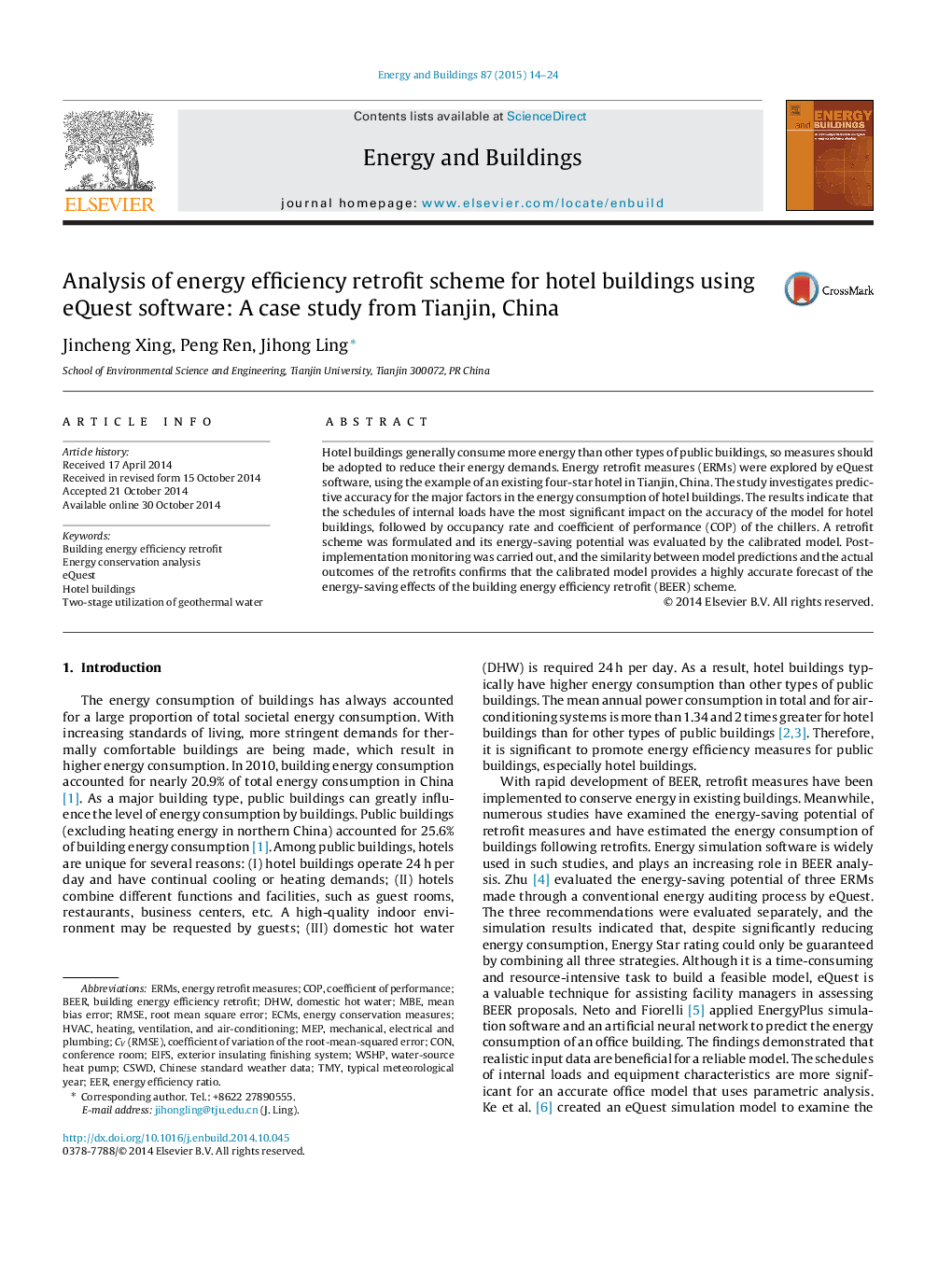| Article ID | Journal | Published Year | Pages | File Type |
|---|---|---|---|---|
| 6732324 | Energy and Buildings | 2015 | 11 Pages |
Abstract
Hotel buildings generally consume more energy than other types of public buildings, so measures should be adopted to reduce their energy demands. Energy retrofit measures (ERMs) were explored by eQuest software, using the example of an existing four-star hotel in Tianjin, China. The study investigates predictive accuracy for the major factors in the energy consumption of hotel buildings. The results indicate that the schedules of internal loads have the most significant impact on the accuracy of the model for hotel buildings, followed by occupancy rate and coefficient of performance (COP) of the chillers. A retrofit scheme was formulated and its energy-saving potential was evaluated by the calibrated model. Post-implementation monitoring was carried out, and the similarity between model predictions and the actual outcomes of the retrofits confirms that the calibrated model provides a highly accurate forecast of the energy-saving effects of the building energy efficiency retrofit (BEER) scheme.
Keywords
Related Topics
Physical Sciences and Engineering
Energy
Renewable Energy, Sustainability and the Environment
Authors
Jincheng Xing, Peng Ren, Jihong Ling,
